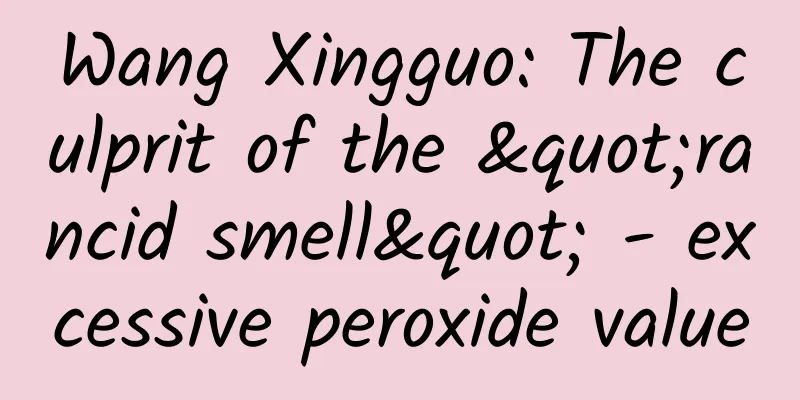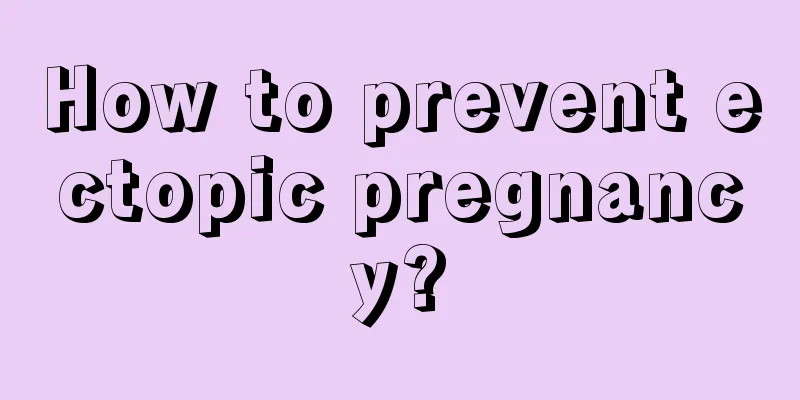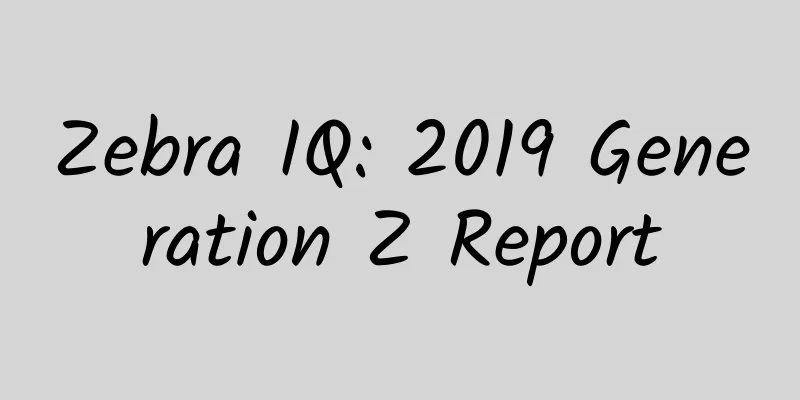Wang Xingguo: The culprit of the "rancid smell" - excessive peroxide value

|
Professor Wang Xingguo Professor of School of Food Science and Engineering, Jiangnan University Director of the International Joint Laboratory of Lipid Nutrition and Safety Expert opinion 1: Peroxide value is one of the important indicators reflecting the degree of fat oxidation in food The peroxide value reflects the content of hydroperoxide, the primary oxidation product of fats and oils in food, and is one of the important indicators for measuring the degree of oxidation of unsaturated fatty acids in fats and oils. The national food safety standard stipulates the limit values of peroxide values for edible oils and various oil-containing foods. For example, the National Food Safety Standard for Vegetable Oils (GB 2716-2018) stipulates that the peroxide value of crude vegetable oil and edible vegetable oil should be less than or equal to 0.25 g/100 g. Generally speaking, the higher the peroxide value, the higher the degree of oxidation of the fat. Expert opinion 2: The peroxide value of food is easily affected by the external environment and increases Biscuits, cakes, cooking oils, melon seeds, nuts and other foods all contain oils, and the oxidation of oils will cause the peroxide value to exceed the standard. In addition to the characteristics of the food itself, the factors that affect the oxidation rate of oils are also related to external environmental factors such as temperature, oxygen content and light. Generally speaking, the higher the storage temperature, the faster the oxidation rate; the higher the oxygen content, the faster the oxidation rate; light will also accelerate the oxidation rate of oils. Therefore, if the company is not careful in the raw material processing, production process, storage, transportation and other links, it will cause the peroxide value to exceed the standard, thereby affecting product quality. Expert opinion 3: Foods with excessive peroxide values pose potential risks to human health If the peroxide value of food exceeds the standard, it means that the food has been oxidized and deteriorated, which may have adverse effects on the human body. The hazards are mainly manifested in three aspects: first, changes in taste and smell and loss of nutrients; second, aldehydes, ketones, acids, etc. produced when food is severely oxidized and deteriorated will destroy the absorption of fat-soluble vitamins, causing gastrointestinal discomfort, diarrhea, and even liver damage; third, long-term consumption of food with excessive peroxide value will aggravate chronic diseases such as cardiovascular diseases. Picture丨TuChong Creative Expert suggestion 1: Food production companies should strengthen process control according to the characteristics of different foods Food production companies should select high-quality raw materials and optimize process parameters according to the characteristics and production goals of different foods. For foods rich in fat, strict measures such as oxygen isolation, deoxygenation and adding antioxidants should be adopted to delay fat oxidation. At the same time, the shelf life of the product should be reasonably evaluated to ensure the stability of the circulation link. Expert advice 2: Pay attention to product label information and make reasonable purchases When buying food, consumers should first check the outer packaging information, focusing on the production date, shelf life and storage conditions. From the perspective of a balanced diet, fat-rich foods should be consumed in moderation and in a reasonable manner, not too much or too little. The Dietary Guidelines for Chinese Residents recommends that the daily fat energy supply ratio for the general population should be controlled below 30%, and the intake of vegetable oil should be around 25 grams. Expert advice three: Store cooking oil and oil-rich foods at low temperatures, away from light and oxygen After purchasing edible oil and foods rich in fat, they should be stored in a low-temperature, light-proof, oxygen-proof environment. At the same time, small-packaged foods should be selected as much as possible, or large-packaged products with separate small packages. Food that is not finished after opening at one time should be sealed, packaged, and placed in a dark, cool place. The "Scientific Interpretation of Food Safety and Health Hot Topics Media Communication Conference" has been held for 10 consecutive years since 2012. Every year, authoritative experts are invited to provide scientific interpretations of the annual food safety and health hot topics. In the form of "consensus in the scientific and technological community", it is widely disseminated through mainstream media and new media, such as television, newspapers, the Internet, Weibo, WeChat, etc. With scientific truth and fair suggestions, we will guide the public opinion on food safety in my country to gradually change in a scientific, objective and rigorous direction, and convey the positive energy of China's food safety. |
<<: Chen Junshi: Mooncakes' "sugar reduction" caused controversy, "0 sugar" is not the goal
Recommend
How long does implantation backache last?
If a woman is healthy and has sex during the ovul...
What kind of pillow is better? What are the requirements for choosing a pillow?
We all know that cushions are a popular type of f...
Is the Marvel Unlimited Comics App free? When will the Marvel Unlimited App Android version be released?
The Marvel Unlimited Comics app is now online! If...
Application of 3D printing and topology optimization in rehabilitation medicine
Author: Wei Guoqiang, Chief Physician, Changzhi P...
How long will vaginitis last?
Many women feel very anxious after suffering from...
Does eating coriander increase milk production or stop milk production?
What breastfeeding mothers worry about most is th...
Sciatica pain during 7 months of pregnancy
Sciatica is a very common disease, especially for...
What kind of milk powder is good for early pregnancy
Pregnancy is really a happy yet painful stage for...
What are the preparations before abortion?
Abortion is a very popular operation in current m...
Can I eat yacon during menstruation?
Yacon looks like sweet potato on the outside, so ...
9 super foods that women must eat
If you like to eat broccoli, tomatoes or oranges,...
4 tips for long-lasting menstruation
Intermittent menstruation is particularly trouble...
Sudden anal pain in women
The pain and heaviness in the anus of women may b...
There are some rules for eating fresh corn
Is the fruit corn so sweet because of added sugar...









